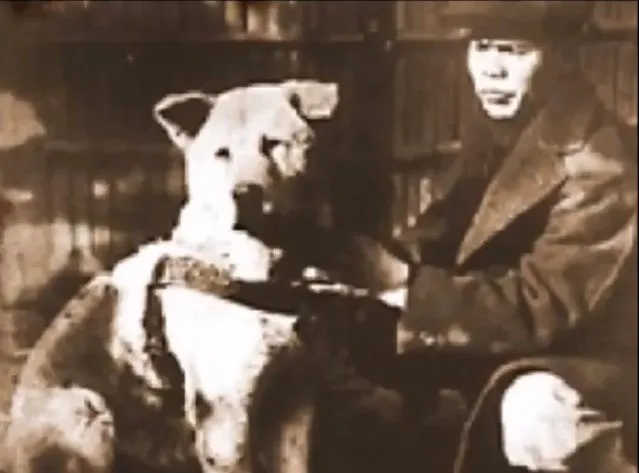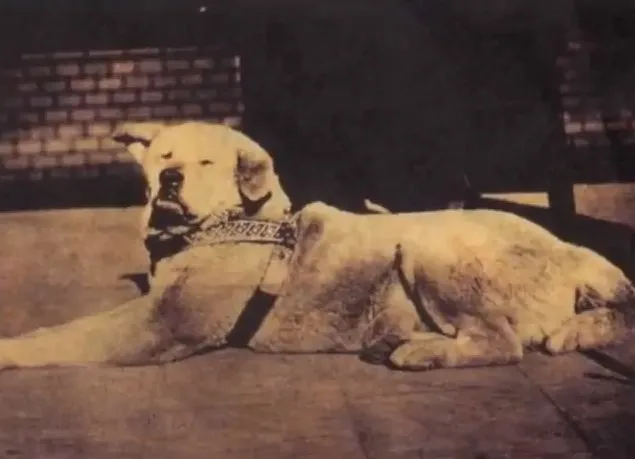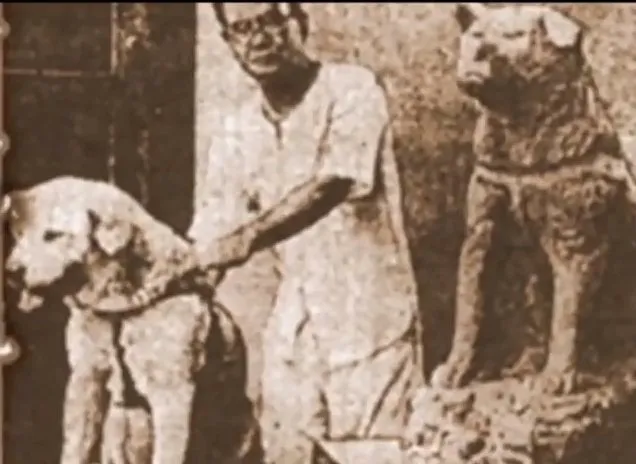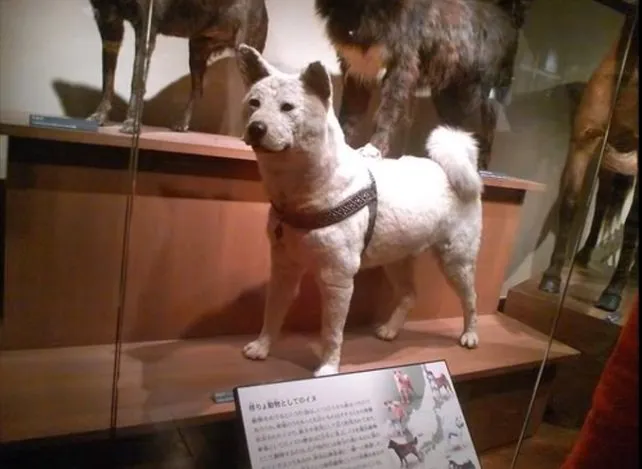The story of Hachiko, the loyal Akita dog, transcends cultural boundaries, touching hearts worldwide with its profound message of devotion. While the tale originates in Japan, its global recognition owes much to the compelling 2009 American adaptation, “Hachi: A Dog’s Tale,” starring Richard Gere. This particular Richard Gere Japanese Dog Film brought Hachiko’s extraordinary journey to a new generation, solidifying his place as a universal symbol of unconditional love and fidelity. For anyone interested in the remarkable bond between humans and their canine companions, understanding the true story behind this cinematic masterpiece is essential.
This film, often referred to simply as the [hachi movie richard gere](https://dogcarestory.com/hachi-movie-richard-gere/), beautifully portrays the emotional depth of Hachiko’s unwavering loyalty. It serves as a poignant reminder of the incredible capacity for love that dogs possess and why they are often considered man’s best friend. Whether you’re a long-time dog owner or simply moved by stories of exceptional animal devotion, the narrative of Hachiko, amplified by its silver screen adaptation, offers invaluable insights into the enduring power of companionship.
The Heart-Wrenching True Story Behind the Film
Before Hollywood immortalized his story, Hachiko was a real dog whose life exemplified loyalty. Born on November 10, 1923, on a farm in Odate City, Japan, Hachiko was a purebred Akita. He was adopted by Professor Hidesaburō Ueno, a professor of agriculture science at The University of Tokyo. Their bond began shortly after Hachiko’s arduous 20-hour train journey to Tokyo, arriving in January 1924 in a delicate state. Professor Ueno and his girlfriend, Yae, nursed the puppy back to health, and a deep, unbreakable friendship blossomed.
Professor Ueno named his new companion Hachi, meaning “eight” in Japanese, a number considered lucky in their culture. Hachi quickly became more than just a pet; he was a cherished member of the family, treated with the same affection as a son. Their daily routine soon became a testament to their connection. Every morning, Hachi would accompany Professor Ueno to Shibuya Train Station, seeing him off to work. In the afternoon, with clockwork precision, Hachi would return to the station, eagerly awaiting his beloved owner’s return.
 Professor Ueno and his loyal Akita, Hachiko, in an archival photo
Professor Ueno and his loyal Akita, Hachiko, in an archival photo
This beautiful routine, however, was tragically cut short. On May 21, 1925, just over a year after Hachi had joined his family, Professor Ueno suffered a sudden and unexpected cerebral hemorrhage while at work and passed away at the age of 53. Hachi, as usual, arrived at Shibuya Station that afternoon, waiting for his best friend, but Professor Ueno never appeared. This day marked the beginning of an extraordinary vigil that would capture the hearts of a nation.
For the next ten years, Hachiko continued his daily pilgrimage to Shibuya Station, arriving precisely when his owner’s train was due, waiting patiently for hours. Despite moving in with the Ueno family’s former gardener, Kozaburo Kobayashi, Hachi’s devotion to Professor Ueno never wavered. He would sit by the exit, scanning each passenger, a poignant figure of hope and loyalty. Initially, Hachiko was not always treated kindly by passersby or even station staff, who saw him merely as a stray. However, this changed dramatically when his story caught the attention of a major Japanese newspaper in 1932.
Hachiko’s appearance in the newspaper transformed him into a national celebrity. He became known as “Chuken Hachiko,” meaning “Hachiko – the faithful dog.” People from all over Japan, touched by his unwavering dedication, began visiting Shibuya Station to offer him treats and comfort. Hachiko’s steadfast wait continued for an incredible nine years, nine months, and 15 days, until his own passing on March 8, 1935, at the age of 11. His story became, and remains, a powerful symbol of enduring love, commitment, and loyalty, inspiring countless individuals and even leading to the production of the [hachiko a dog's story movie](https://dogcarestory.com/hachiko-a-dogs-story-movie/).
 Hachiko faithfully awaiting Professor Ueno at Shibuya Train Station
Hachiko faithfully awaiting Professor Ueno at Shibuya Train Station
“Hachi: A Dog’s Tale” – The Richard Gere Japanese Dog Film That Moved Millions
The enduring appeal of Hachiko’s true story led to multiple adaptations, but the 2009 American production, “Hachi: A Dog’s Tale,” starring Richard Gere, arguably brought the tale its broadest international recognition. This richard gere japanese dog film masterfully retold Hachiko’s journey, relocating the setting from Japan to a fictional American town called Bedridge. In the film, Richard Gere plays Professor Parker Wilson, a college professor who discovers an Akita puppy stranded at his local train station and forms an immediate, deep bond with the dog he names Hachi.
The movie beautifully captures the daily rituals that defined Hachiko’s life, with Professor Wilson and Hachi developing the same morning farewells and afternoon reunions at the train station. When tragedy strikes, and Professor Wilson dies unexpectedly, Hachi’s unyielding vigil at the station for his beloved owner becomes the central, heart-wrenching theme. The film was primarily shot in Rhode Island, USA, and even features a replica statue of Hachiko at Woonsocket Depot Square, mirroring the famous Shibuya landmark. This [movie hachi with richard gere](https://dogcarestory.com/movie-hachi-with-richard-gere/) struck a chord with audiences globally, eliciting strong emotional responses and critical acclaim for its simple yet profound narrative.
The success of “Hachi: A Dog’s Tale” lies in its universal themes of loyalty, devotion, and the unique, unconditional love that exists between a pet and its owner. Richard Gere’s portrayal of Professor Wilson brings a quiet dignity to the human side of the story, allowing Hachi’s loyalty to shine as the central focus. Many viewers, deeply touched by the [movie with richard gere hachi](https://dogcarestory.com/movie-with-richard-gere-hachi/), reported crying extensively, a testament to the film’s powerful emotional resonance. It served not only as entertainment but also as a powerful reminder of the deep, often unspoken, connections we share with our animal companions.
While an earlier Japanese film, “Hachiko Monogatari” (1987), also depicted Hachiko’s story, the American version introduced the narrative to a much wider English-speaking audience. It brought the specific details of the Akita breed’s intelligence and loyalty into the spotlight, educating many about this remarkable dog. The film encourages viewers to reflect on their own relationships with pets and the profound impact these animals have on our lives, making the [hachi a dog's tale real story](https://dogcarestory.com/hachi-a-dogs-tale-real-story/) accessible and deeply moving for millions more.
Hachiko’s Everlasting Impact and Memorials
Hachiko’s story, immortalized by the richard gere japanese dog film, continues to inspire people around the world, transforming him into a cultural icon of loyalty and devotion. In Japan, his legacy is preserved through numerous statues and monuments, serving as powerful reminders of his unwavering spirit. The most famous of these is the bronze statue located outside Shibuya Station in central Tokyo, erected in 1934 and famously attended by Hachiko himself at its unveiling. Though the original was melted for metal during World War II, a new one, crafted by the original artist’s son, was placed in 1948 and stands today as a popular meeting point and tourist attraction. The exit leading to the statue is even named “Hachikō-guchi,” or “The Hachikō Entrance/Exit.”
 The enduring bronze statue of Hachiko, a popular meeting spot at Shibuya Station
The enduring bronze statue of Hachiko, a popular meeting spot at Shibuya Station
Beyond Shibuya, Hachiko’s presence is felt throughout Japan. A beautiful mosaic mural titled “Hachiko Family” adorns a wall at Shibuya Station, depicting Hachiko playing happily with his family. Each year on March 8th, the anniversary of Hachiko’s death, a memorial ceremony is held at Shibuya Station to honor his loyalty. For those wishing to see Hachiko himself, his preserved taxidermy is on display at the National Museum of Nature and Science in Ueno, Tokyo, a poignant testament to his historical significance.
 The preserved taxidermy of Hachiko displayed at the National Museum of Nature and Science
The preserved taxidermy of Hachiko displayed at the National Museum of Nature and Science
Perhaps one of the most touching memorials is the bronze statue at the University of Tokyo, depicting Hachiko joyfully reuniting with Professor Ueno. Erected on March 9, 2015, this statue captures the happiness of their bond, marking the 80th anniversary of Hachiko’s death. Furthermore, Hachiko’s ashes are buried next to Professor Ueno’s grave in Aoyama Cemetery in Minato, Tokyo, with a monument marking his resting place. Even Odate City in the Akita prefecture, Hachiko’s birthplace, boasts the Akita Dog Museum, dedicated to the breed and its most famous representative. This city, the “capital city” of the Akita breed, features numerous Hachiko statues and symbols, including one in front of Odate Station and a Hachiko Shrine on the train platform.
The various tributes to Hachiko, both in Japan and in places like Rhode Island where the [movie hachi with richard gere](https://dogcarestory.com/movie-hachi-with-richard-gere/) was filmed, underscore the universal themes of loyalty and love that resonate deeply with pet owners. Hachiko’s story serves as a powerful reminder of the profound emotional connections we forge with our dogs and the immense value of their unwavering companionship. In the realm of dog care, Hachiko’s legacy reinforces the importance of nurturing these bonds, recognizing that dogs truly are integral members of our families.
Conclusion
Hachiko’s extraordinary life, a testament to unparalleled loyalty and devotion, has left an indelible mark on history and culture. His decade-long wait for his beloved owner at Shibuya Station continues to captivate and move hearts, serving as a timeless emblem of the profound bond between humans and animals. The richard gere japanese dog film, “Hachi: A Dog’s Tale,” played a pivotal role in sharing this remarkable true story with a global audience, ensuring that Hachiko’s legacy endures.
Through both the historical accounts and its cinematic adaptations, Hachiko’s narrative encourages us to reflect on the depth of love and commitment that our canine companions offer. It reminds us that loyalty is not just a human trait but a beautiful virtue exemplified powerfully by animals. As dog owners, we are privileged to experience such unconditional affection, and Hachiko’s story reinforces the importance of cherishing and honoring that bond. If you haven’t yet, watch “Hachi: A Dog’s Tale” and let this powerful story deepen your appreciation for the faithful friends in your life.
